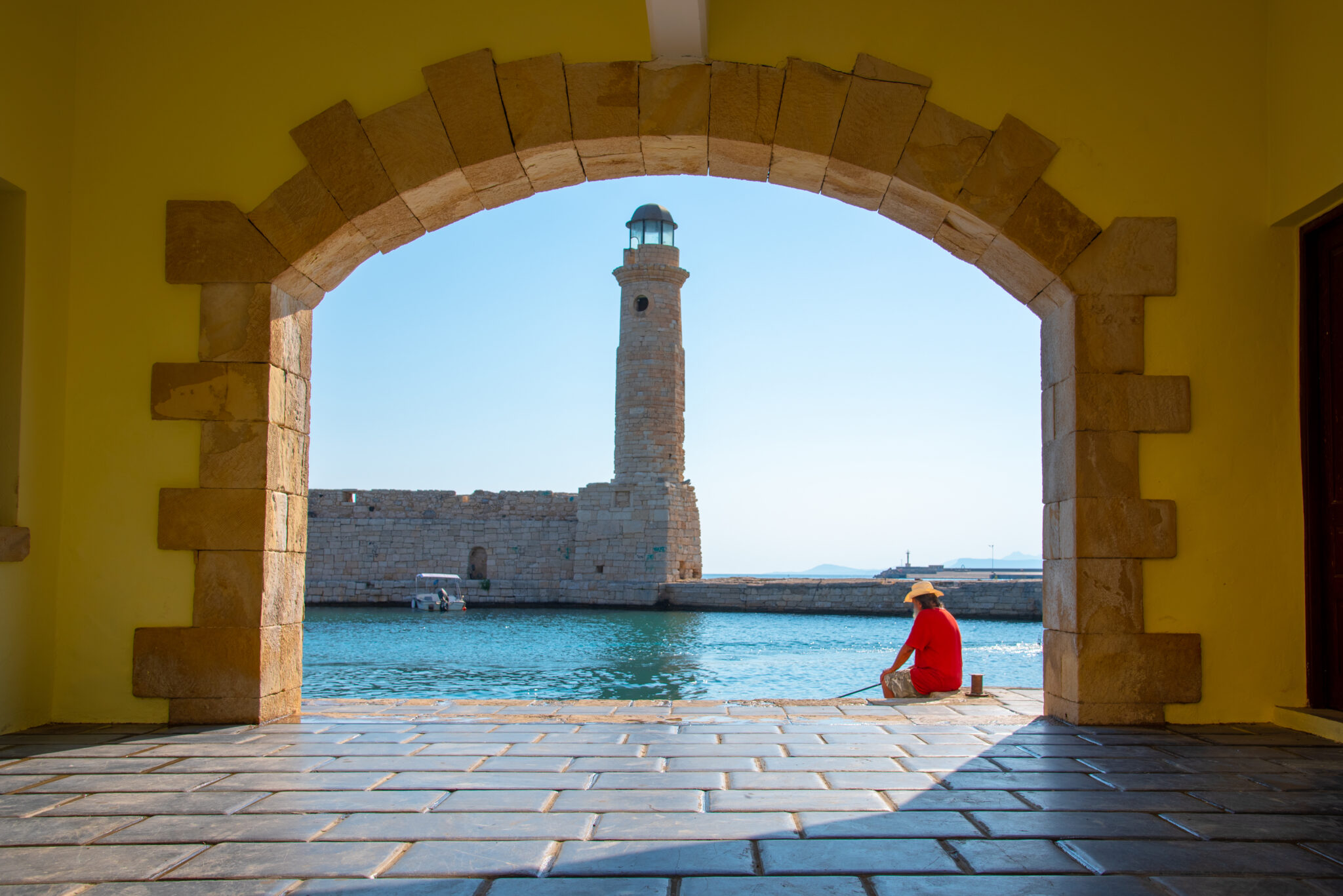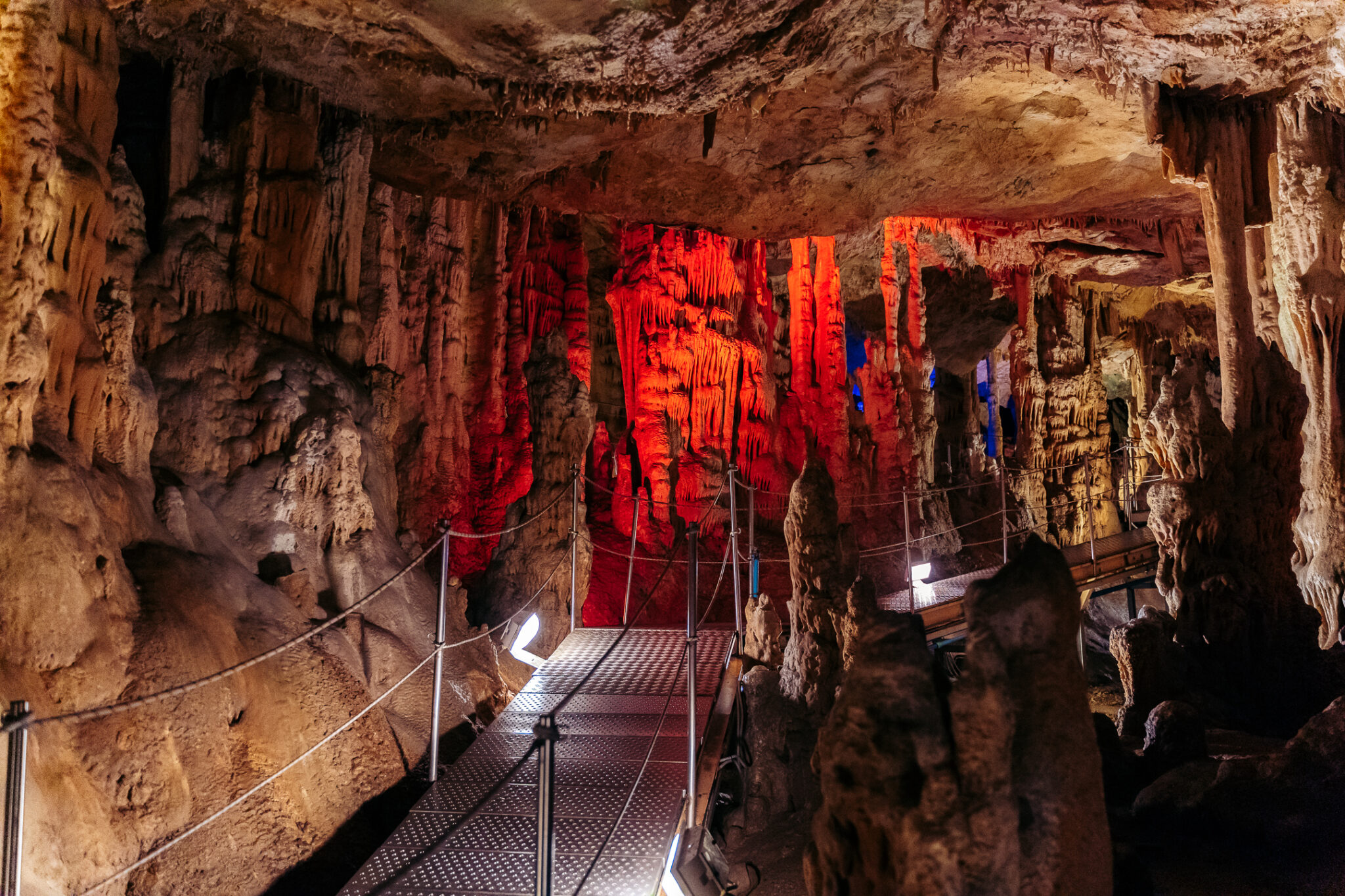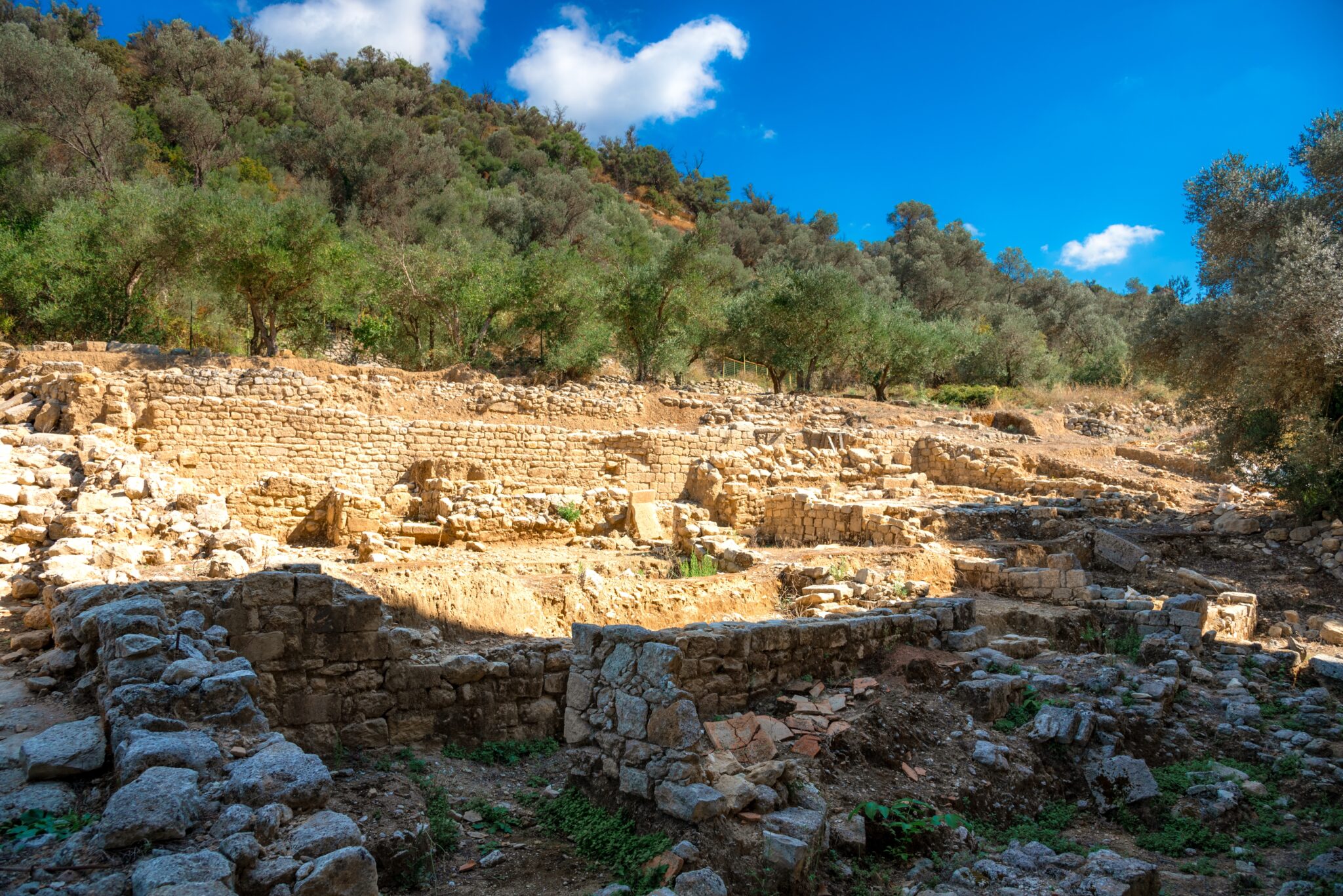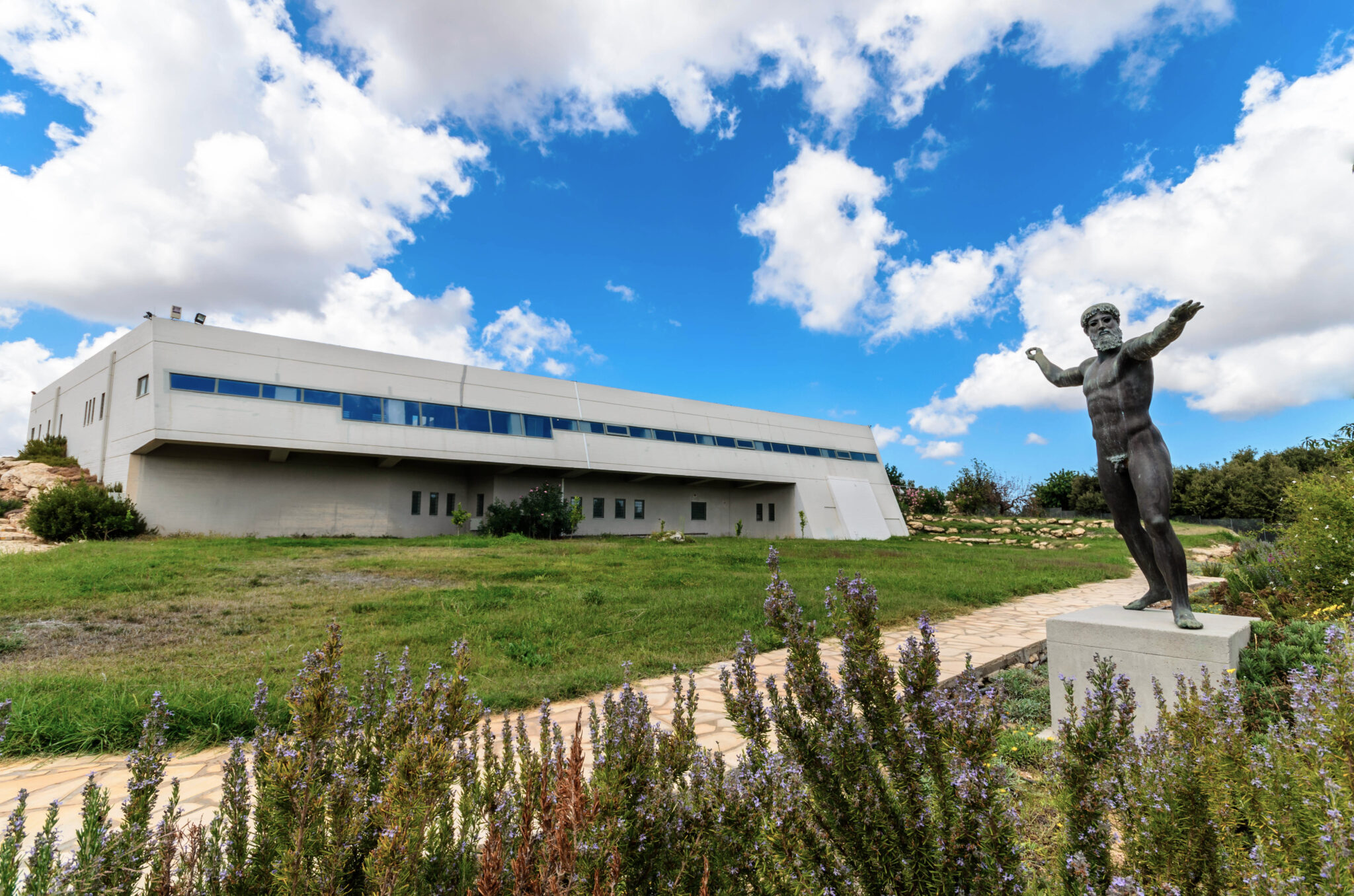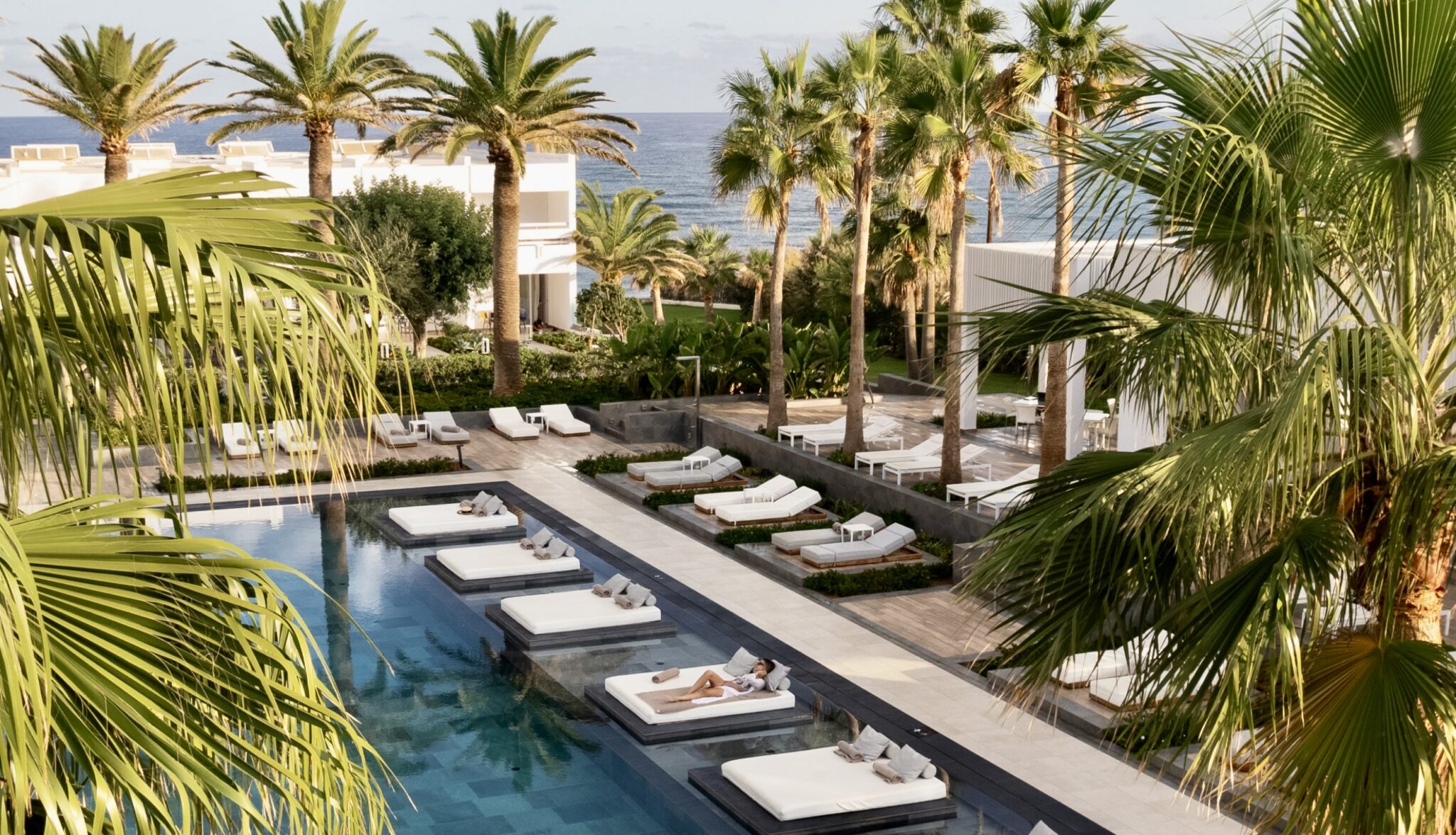Discover the ancient city of Eleftherna, founded in the 9th century BC on the slopes of Mount Ida, the highest mountain in Crete. This historical site was once a natural crossroads between Knossos and Cydonia, controlling ports and a sanctuary of great importance. Today, visitors can explore the site’s villas, public buildings, baths, cisterns, and acropolis, along with the Orthi Petra cemetery and its Tomb of the Warriors. The site also boasts stunning views of the surrounding countryside.
Additionally, visitors can immerse themselves in the rich history and culture of Crete at the Archaeological Museum of Rethymno, Historical and Folk Art Museum of Rethymno, and Contemporary Art Museum of Crete. With so much to explore, jump into your Avis rental car and venture out to uncover the diverse facets of the captivating island of Crete.
Ancient Eleftherna
On the slopes of Mount Ida, the highest mountain in Crete, the ancient city of Eleftherna was founded in the 9th century BC by Dorian colonists. Its position became a natural crossroads as it lay between Knossos and Cydonia, and it controlled the ports of Stavromenos and Panonormos and the sanctuary of the cave of Ideon Andron. It also experienced prosperity in Hellenistic and Roman times.
An impressive multi-media museum was opened on the site in 2016 and it houses finds from prehistoric times through to the Byzantine era. The site itself is accessible on stone paths with large canopies covering the most important diggings. The Orthi Petra cemetery is still being excavated and archaeologists have found the Tomb of the Warriors, a site containing vases and weapons of soldiers killed in battle. An unlooted tomb from 700 BC contained a young couple, probably siblings, covered in a gold blanket of 3,000 gold sheets. Elsewhere there are villas, public buildings, baths, cisterns, and an acropolis, along with magnificent views of the surrounding countryside. Museum of Ancient Eleftherna (Tel.: 28340 92501, https://mae.uoc.gr/, closed Tuesday, 3€)
Archaeological Museum Of Rethymno
Housed in the atmospheric Venetian church of St. Francisco built by the Barozzi family around 1530, the museum is small but packed with evidence of the importance of Cretan civilisation. Highlights include a collection of bone tools from a neolithic site at Gerani, graceful hand-painted Minoan pottery, an unfinished statue of Aphrodite from the Roman era, a 9,000 year old limestone deity, and a bronze lamp from the Hellenistic period depicting Dionysus riding a panther. Archaeological Museum of Rethymno (Tel.: 28310 27506, closed Tuesday, 2€)
Historical and Folk Art Museum of Rethymno
A restored 17th century Venetian palazzo in the shadow of the Neratze minaret houses a five room collection of furniture, weavings, agricultural tools, clothing and an excellent display concerning the resistance during WW2 that provides a vivid depiction of what life was like on Crete until relatively recent times. Historical and Folk Art Museum of Rethymno (Tel.: 28310 23398, closed Sunday, 4€)
Contemporary Art Museum of Crete
A former soap factory houses a permanent exhibition of a wide spectrum of 700 works from the second half of the 20th century to date including the collection of Lefteris Kanakis, an important Greek artist born in Rethymno. Temporary exhibitions with international content are also offered alongside educational and cultural events. Contemporary Art Museum of Crete (Tel.; 28310 52530, www.cca.gr, closed Monday, 3€)
Read also:
The Gastronomy of Rethymno: Flavours and Aromas of the Mediterranean
The wines of Greece – Rethymno: The climate, the wineries, the varieties, the labels
A Spectacular Cave Open to the Public on the Island of Crete



